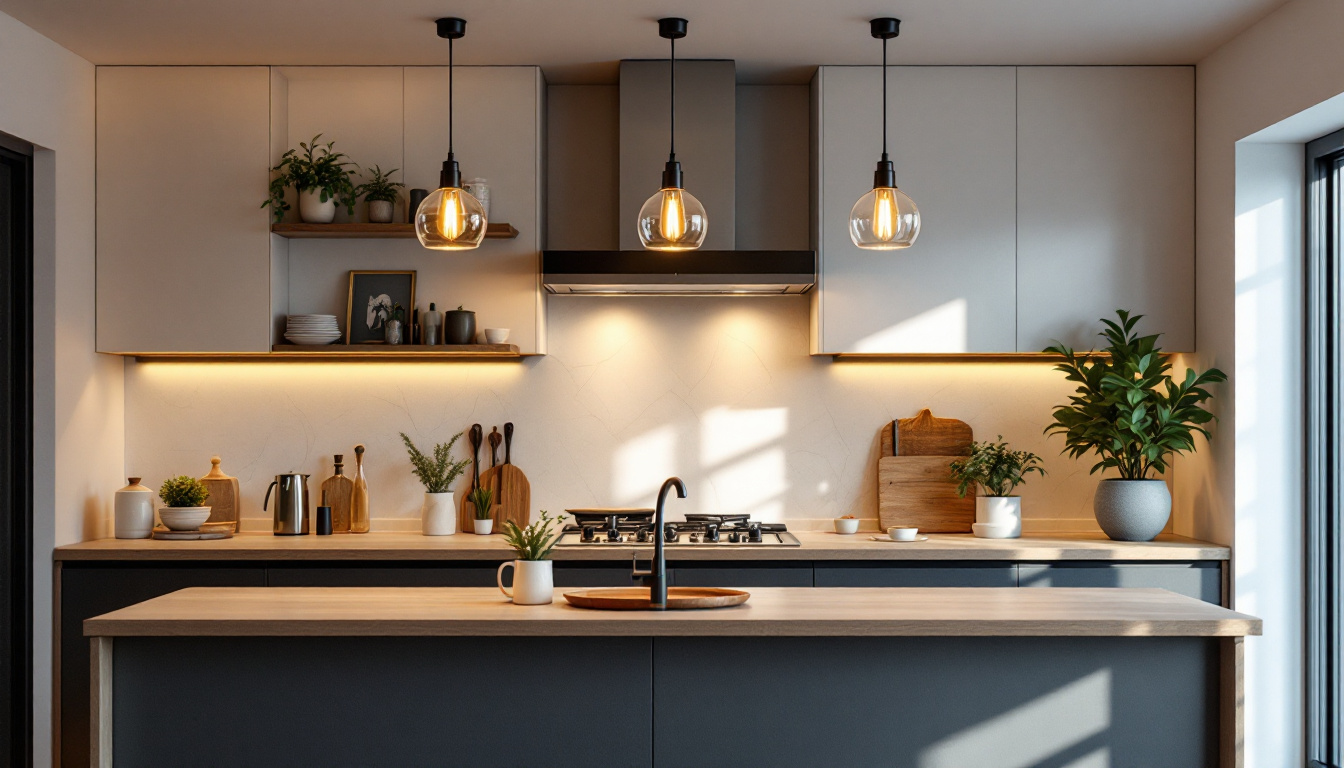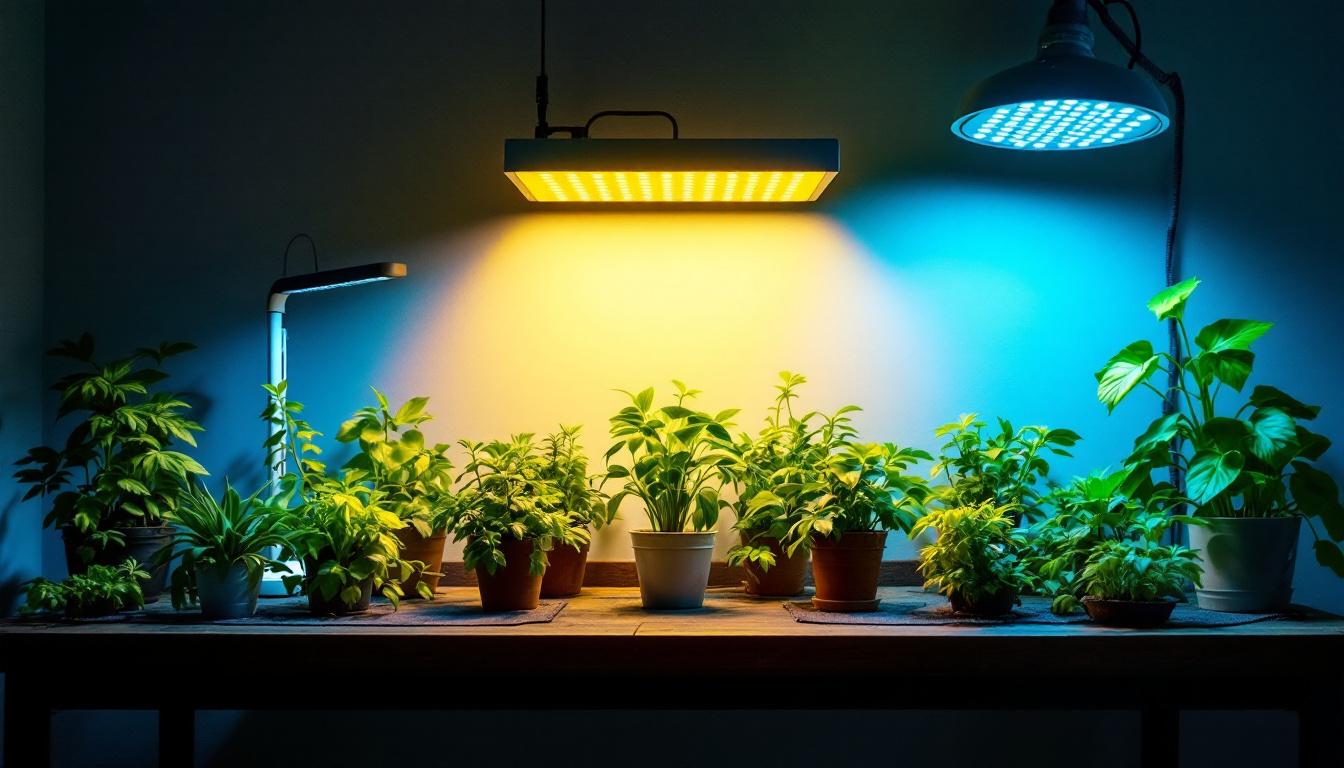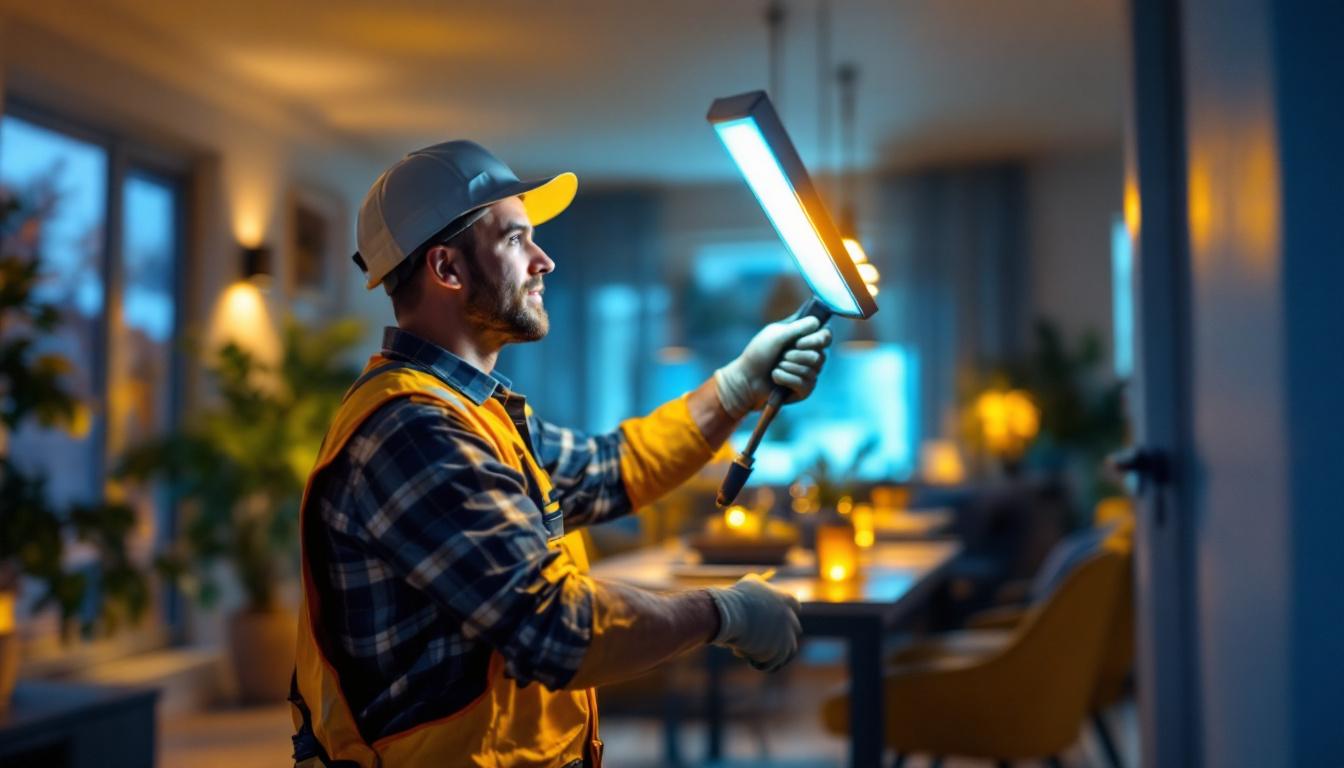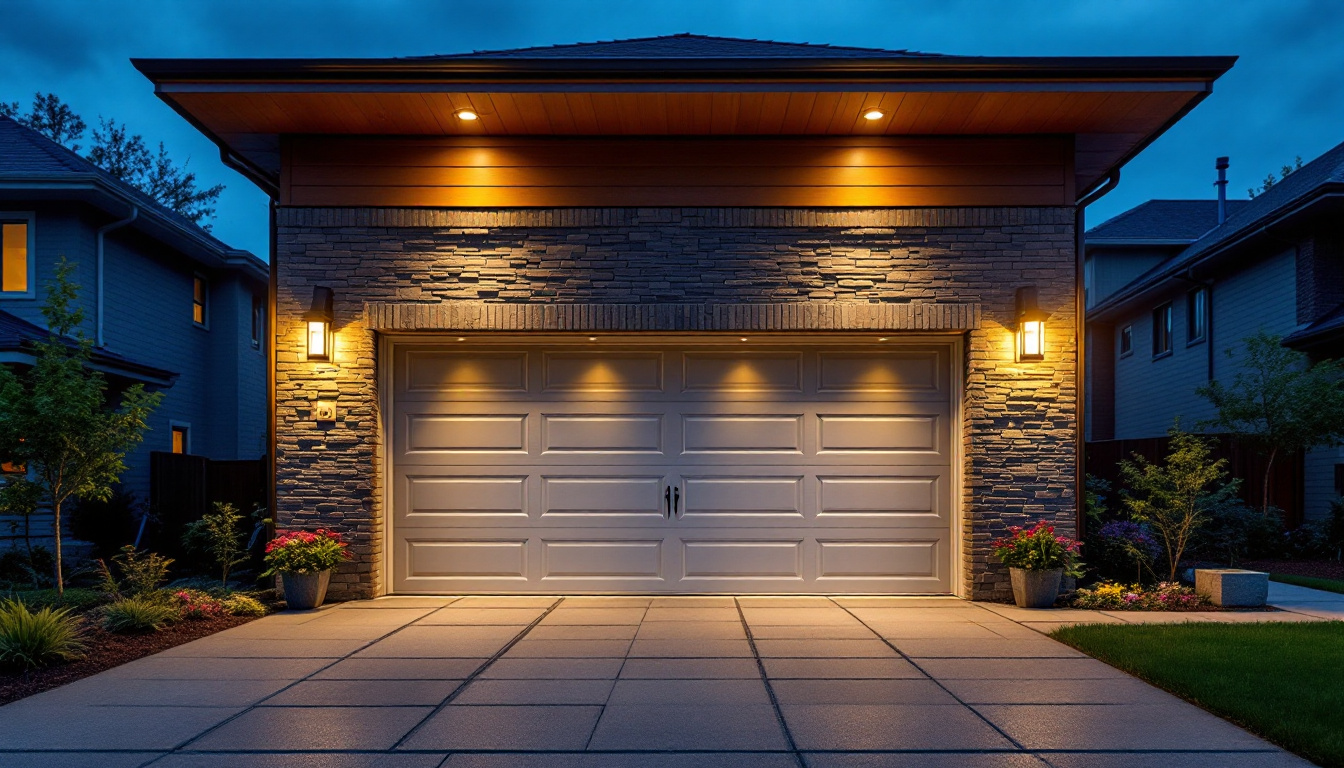
In the world of interior design, lighting plays a pivotal role in creating ambiance and functionality. Among the various lighting options available, modern pendant lights have emerged as a favorite for kitchens. They not only provide essential illumination but also serve as a statement piece that enhances the overall aesthetic of the space. This article delves into the benefits of modern pendant lights, their design versatility, and how they can transform kitchen lighting designs.
Effective kitchen lighting is crucial for both practicality and style. A well-lit kitchen makes cooking safer and more enjoyable, while also setting the mood for family gatherings and entertaining guests. The right lighting can highlight architectural features, showcase decorative elements, and even influence the perceived size of the space. Moreover, the choice of lighting can significantly impact energy efficiency, helping homeowners save on electricity bills while still achieving the desired aesthetic.
In any kitchen, lighting must serve two primary functions: it should be functional and aesthetic. Functional lighting ensures that work areas are well-lit, allowing for safe food preparation and cooking. This type of lighting typically includes task lights, such as under-cabinet fixtures and recessed lights. These fixtures are strategically placed to minimize shadows and illuminate countertops, making it easier to chop vegetables or read recipes without straining your eyes.
Aesthetic lighting, on the other hand, adds character and style to the kitchen. This is where modern pendant lights come into play. They can complement the kitchen’s design theme, whether it’s contemporary, rustic, or industrial, while also providing a warm glow that enhances the overall atmosphere. Additionally, decorative elements like chandeliers or wall sconces can be incorporated to create a unique focal point, allowing homeowners to express their personal style while ensuring the space remains functional.
Layering light is a crucial aspect of kitchen design. By combining ambient, task, and accent lighting, designers can create a well-balanced and inviting environment. Modern pendant lights can serve as a focal point in this layered approach, offering both ambient and task lighting depending on their placement and design. The careful selection of fixtures can transform the kitchen into a multifunctional space that caters to both cooking and socializing.
For example, pendant lights hung above an island or dining table can provide direct illumination for meal preparation or dining, while also contributing to the overall ambiance of the kitchen. This versatility makes them an essential component in any lighting design strategy. Moreover, incorporating dimmable options allows homeowners to adjust the brightness according to the time of day or occasion, creating a cozy atmosphere for family dinners or a bright, energetic space for morning breakfasts. By thoughtfully layering different types of lighting, one can achieve a harmonious balance that enhances both the functionality and aesthetic appeal of the kitchen.
When selecting modern pendant lights for a kitchen, several factors should be considered. These include style, size, material, and placement. Each of these elements plays a significant role in how the lights will function and how they will enhance the kitchen’s design.
Modern pendant lights come in a wide array of styles, from sleek and minimalist to bold and artistic. The choice of style should align with the overall theme of the kitchen. For a contemporary kitchen, sleek metal or glass pendants may be ideal, while a more eclectic space might benefit from colorful or uniquely shaped designs.
It’s also essential to consider how the pendant lights will interact with other design elements in the kitchen, such as cabinetry, countertops, and appliances. A cohesive design will create a harmonious look that elevates the entire space. Additionally, the color palette of the kitchen can influence the choice of pendant lights; for instance, warm-toned woods or brass finishes can complement a rustic kitchen, while cool-toned metals may suit a more industrial aesthetic.
The size of the pendant lights is another critical factor. A large pendant can serve as a dramatic focal point, while smaller pendants can be grouped together for a more subtle effect. The scale of the lights should be proportionate to the kitchen’s size and layout. For instance, a spacious kitchen island might require multiple pendants to ensure adequate lighting and visual balance.
In addition, the height at which the pendants are hung is crucial. Ideally, they should be suspended 30 to 36 inches above the countertop or table to provide optimal illumination without obstructing views. Furthermore, considering the overall layout of the kitchen can help in determining the best placement; pendants hung over an island should not only provide task lighting but also enhance the flow of the space, guiding the eye throughout the kitchen.
The material and finish of modern pendant lights can greatly influence the kitchen’s overall aesthetic. Common materials include metal, glass, and wood, each offering a distinct look and feel. Metal finishes such as brushed nickel or matte black can add a touch of sophistication, while glass pendants can create an airy, open feel.
Moreover, the finish should complement other elements in the kitchen. For example, if the kitchen features stainless steel appliances, pendant lights with a similar finish can create a cohesive look. Conversely, contrasting materials can add visual interest and depth to the design. It’s also worth noting that the texture of the materials can play a significant role; a combination of smooth glass and rough-hewn wood can create a dynamic interplay that draws the eye and adds character to the space. Additionally, consider the ease of maintenance for each material, as kitchens can be prone to grease and moisture, making some finishes more practical than others.
The placement of modern pendant lights is crucial for maximizing their effectiveness. Strategic positioning can enhance both functionality and aesthetics, ensuring that the lights serve their intended purpose while also contributing to the kitchen’s design.
One of the most common placements for pendant lights is above kitchen islands or peninsulas. This location allows for direct task lighting, making food preparation and cooking easier. Additionally, it creates a visual anchor in the space, drawing the eye and adding dimension to the kitchen layout.
When installing pendant lights over an island, consider the number of fixtures needed. A single large pendant can make a bold statement, while multiple smaller pendants can create a more dynamic look. The arrangement should also take into account the size of the island and the overall kitchen design.
Pendant lights can also be effectively used over dining tables or breakfast nooks. In this setting, they provide both functional lighting for meals and a warm ambiance for social gatherings. The height and number of pendants should be carefully considered to ensure that diners are not obstructed by the fixtures.
For a more casual dining experience, consider using a cluster of smaller pendants at varying heights. This approach can create a playful and inviting atmosphere, encouraging family and friends to gather around the table.
Modern pendant lights can also be used to create visual interest in the kitchen. By varying the heights and styles of the fixtures, designers can add dimension and depth to the space. This technique can be particularly effective in open-concept kitchens, where the lighting can help define different areas within the room.
Additionally, consider using pendant lights in unexpected places, such as in a corner or near a window. This can draw attention to architectural features or create a cozy reading nook, enhancing the kitchen’s overall functionality and appeal.
As the focus on sustainability continues to grow, energy-efficient lighting solutions are becoming increasingly important in kitchen design. Modern pendant lights can be found in a variety of energy-efficient options, including LED bulbs and fixtures that are designed to minimize energy consumption.
LED pendant lights offer numerous advantages, making them an excellent choice for modern kitchens. They consume significantly less energy than traditional incandescent bulbs, resulting in lower electricity bills and a reduced carbon footprint. Additionally, LED lights have a longer lifespan, meaning they require less frequent replacement, which is both cost-effective and environmentally friendly.
Moreover, LED technology has advanced significantly, allowing for a wide range of color temperatures and brightness levels. This versatility enables homeowners to customize their lighting to suit their preferences and needs, enhancing the kitchen’s ambiance.
In addition to energy efficiency, the materials used in modern pendant lights can impact sustainability. Opting for fixtures made from recycled or sustainably sourced materials can contribute to a more eco-friendly kitchen design. Many manufacturers are now prioritizing sustainability in their product lines, offering stylish options that align with environmentally conscious values.
Furthermore, selecting durable materials can extend the lifespan of the lighting fixtures, reducing waste and the need for replacements. This approach not only benefits the environment but also provides long-term savings for homeowners.
Modern pendant lights are more than just a source of illumination; they are a powerful design tool that can transform the kitchen into a functional and aesthetically pleasing space. By carefully considering style, size, material, and placement, lighting contractors can create a harmonious balance of light and design that enhances the kitchen’s overall appeal.
As trends in kitchen design continue to evolve, the importance of effective lighting will remain a constant. Embracing modern pendant lights not only elevates the visual impact of the kitchen but also enhances the functionality of the space, making it a welcoming environment for cooking, dining, and socializing.
Ultimately, the secret to better lighting designs lies in the thoughtful integration of modern pendant lights, ensuring that they serve both practical and aesthetic purposes in the heart of the home.
Ready to elevate your kitchen designs with the finest modern pendant lights? At LumenWholesale, we offer an exceptional range of spec-grade lighting products that blend quality, affordability, and convenience. Say goodbye to inflated markups and hello to top-quality lighting at wholesale prices, with the added benefit of free shipping on bulk orders. Don’t compromise on your lighting needs—choose LumenWholesale for reliable, high-performance lighting solutions that will make every project shine. Discover the value we bring to your designs and browse our selection for the best wholesale lighting value today.

Discover the essential insights into grow light fixtures with answers to lighting contractors’ most common questions.

Discover how lighting contractors can enhance their projects and boost efficiency with motion-activated LED lights.

Discover expert insights on choosing and installing outside garage door lights with this comprehensive guide from a seasoned lighting contractor.

Discover effective strategies for lighting contractors to tackle the challenges of using low wattage lamps.